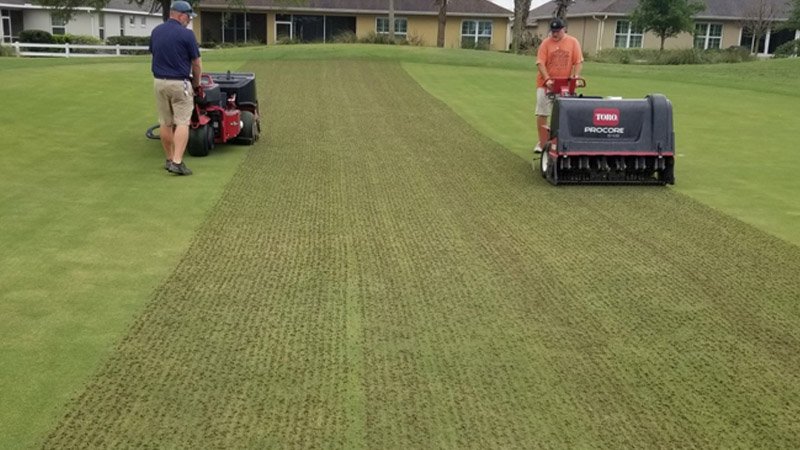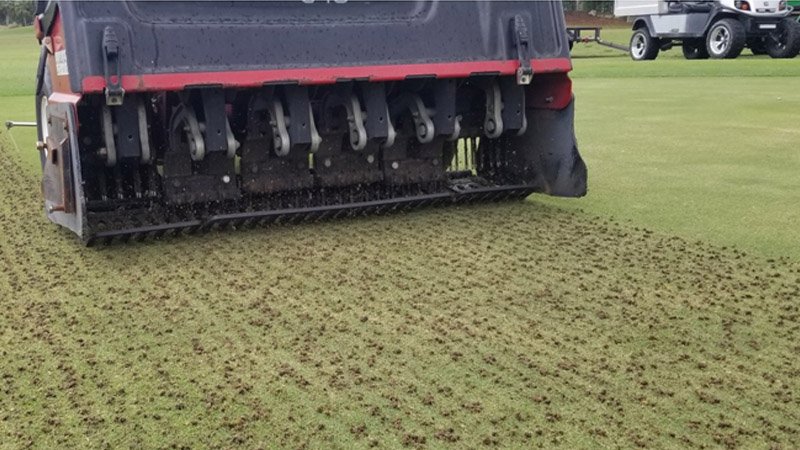
For some reason, it is getting harder and harder every day to distinguish between a silver lining and a storm cloud, or a glass that is half full and one that is half empty.
For almost two decades, the golf business has been defined by how many people were leaving the game. In a nutshell, there are nearly 10 million fewer players today than there were in 2002; there are more than 2,000 fewer courses and golfers are playing almost 70 million fewer rounds than they were 20 years ago.
In many corners of the country, golf rounds are not a problem during the pandemic. According to Golf Datatech, which measures rounds played at private and daily fee courses nationwide, year-over-year rounds played were up nearly 20 percent in July compared with the same month last year. Rounds played in July were up in every state except Hawaii.
For many, this summer has been a case of "be careful what you wish for."
Even as some services, namely food and beverage, have been slow to return during the pandemic, golf has brought casual players back to the course in droves and superintendents across the country have reported seeing scores of new players.
Superintendent Joe Wachter credits the Covid-19 golf boom for helping keep the lights on at Glen Echo Country Club in St. Louis. Like every place, the club has lost a lot of money from canceled outings and weddings, and stands to lose more in the fall. Since opening in the spring during the pandemic, about 800-900 rounds a week have been played at this 1901 James Foulis design that was the site of Olympic golf during the 1904 Summer Games. After a brief dip in play in late July and early August, play is ticking up again at the end of the season.
"A lot of people put their clubs away after Labor Day, but not so much this year," Wachter said.
"The most important thing for us is that all this play has kept us all employed."
There has been a lot of increased play and increased traffic. I know a lot of guys who are pushing off aerification because they are packed and the cash register keeps ringing.
There is such thing as too much of a good thing.
The Chattanooga golf market was a mixed bag in the early days of the pandemic. Courses in the city limits were closed. The Bear Trace at Harrison Bay, a state park golf course outside of town, was closed as were all state-owned facilities. All other courses outside the city limits were open for play.
Now, The Bear Trace, which was closed for about a month early in the pandemic, is getting all the rounds it wants - and then some. With 12-minute tee times and single riders in golf carts, up to 170 rounds a day are played at the state park course along the banks of the Tennessee River.
No golfers can tee off after 4 p.m., thanks in part to the single rider policy.
"Otherwise, those guys (in the cart facility) would be here until dark-thirty just cleaning carts," Carter said.
"When I look at a tee, I see four or eight carts sitting there, and of course they play Follow the Leader. We're warm-season grass, so it's not affecting us yet, but those courses with cool-season grass are getting worn out. We haven't seen the damage yet, but it's there. The golf course, with single riders, is taking another year's worth of abuse."

The result, thatchy, spongy greens, is nothing a good aerification can't cure. That will have to wait.
"We usually aerify in late July or early August. We close and go Monday to Friday. It really helps us. Those five days are it; we don't do anything else the rest of the year, but we're not going to close to aerfiy this year," Carter said. "We had to give it up to keep the cash register open to make up for the month we were closed. The damage is something only a superintendent can see - spongy greens, some scalping. We'll get that back next year."
In place of a traditional aerification, Carter and his team have been performing some pretty aggressive verticutting and punching smaller holes with 1-inch tines to remove at least some thatch.
The tiny tines disrupt only about 1 percent of the surface area, but is better than nothing when closing for traditional aerification is not an option.
"You're not really pulling anything," Carter said. "You're just trying to keep some holes open and manage thatch."
There are a couple low-lying holes at Bear Trace that Carter has to keep closed throughout the winter to prevent damage that doesn't often show itself on warm-season grass until spring. The increased play and absence of aerification might necessitate closing a couple more.
Carter's story is one that has been told throughout the country this year - too much play, but too much money to close for needed cultural practices.
"One of the biggest limiting factors we are hearing about is all the play is wearing out the grass," said Joe Rimelspach, turf pathologist and program specialist at Ohio State University. "Many places haven't been able to core or aerate, because the course has found out that they can make more money with all the play."
Glen Echo has benefitted from a cooperative agreement that grants golf privileges to members of the Missouri Athletic Club, a non-golf athletic club.
"I've seen a lot of new faces this year that I don't recognize as regular Glen Echo members," Wachter said. "That has really helped drive revenue.
"We're seeing more women and more couples this year."
A lot of people put their clubs away after Labor Day, but not so much this year. . . . The most important thing for us is that all this play has kept us all employed.
Andrew Jorgensen manages 81 holes in Florida for On Top of the World Communities, including 54 in Ocala and 27 in Clearwater.
All of the courses managed by OTWC closed in March and began to reopen throughout April. Early spring typically is not the best time to be poking holes in mostly TifDwarf and Tif Eagle greens, but this has been anything but a typical year.
"Normally, April is not the best time for aerification. Recovery is slower, but after doing it now, I'm all for it mostly for selfish reasons," Jorgensen said. "The weather was good. It was 75 when we did it, not 95, so it wasn't unbearable. Recovery did take longer, but we'll never be able to do that again.
"At first, we didn't know if we were going to be closed for two weeks or all summer. We bumped up aerification to early in April and stayed closed for two weeks after that before reopening. We knew we would be ridiculed for shutting down right after reopening for aerification. By doing it in early April, we just stayed closed."
The Florida heat and humidity has done little to keep golfers away even throughout the summer.
"There has been a lot of increased play and increased traffic,"Jorgensen said. "I know a lot of guys who are pushing off aerification because they are packed and the cash register keeps ringing."
With so many holes of golf available, Jorgensen has the luxury of closing courses and moving players around to keep up with cultural practices. That's a luxury not everyone has.
In Chattanooga, there is no end in sight, at least not yet anyway. The Chattanooga Lookouts baseball team was grounded when all minor league play was canceled in June, movie theaters are only now beginning to reopen. Golf has been there for experienced players and newcomers alike almost through the duration of the pandemic.
"We're going as long as the weather's good," Carter said. 'People are playing. There's nothing else to do.
"It's either golf or go fishing or go take a hike at a state park.
"If we were on our normal nine-minute tee times with two people per cart and not closing it off at 4 o'clock we could be 250 rounds a day."


